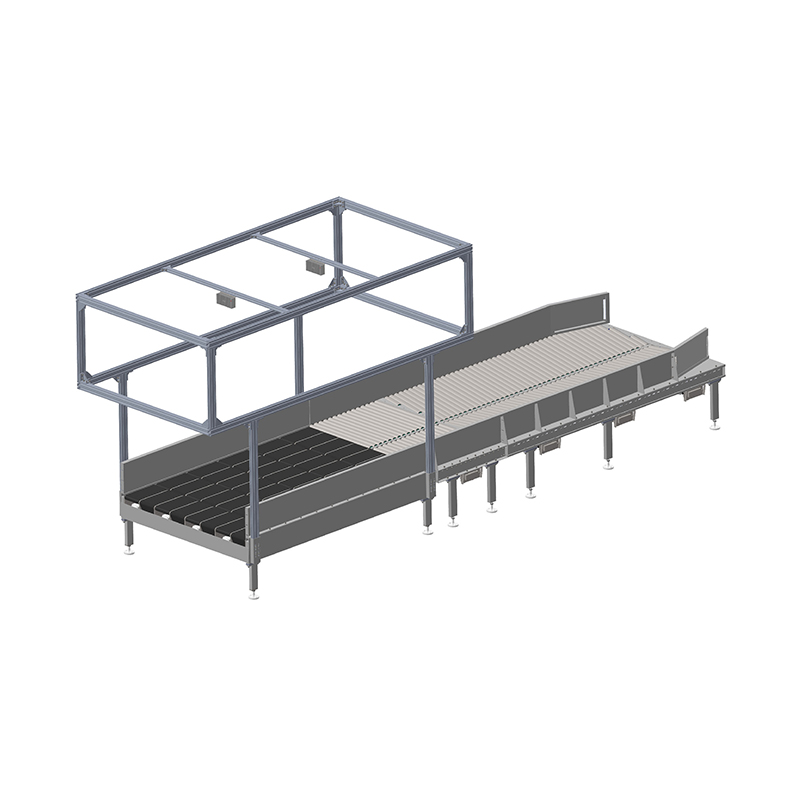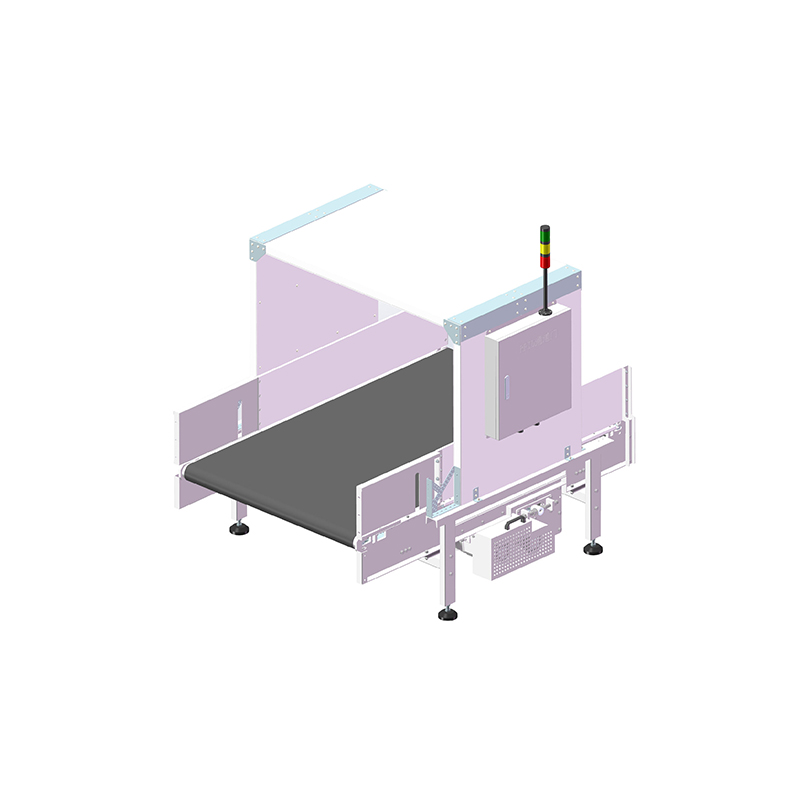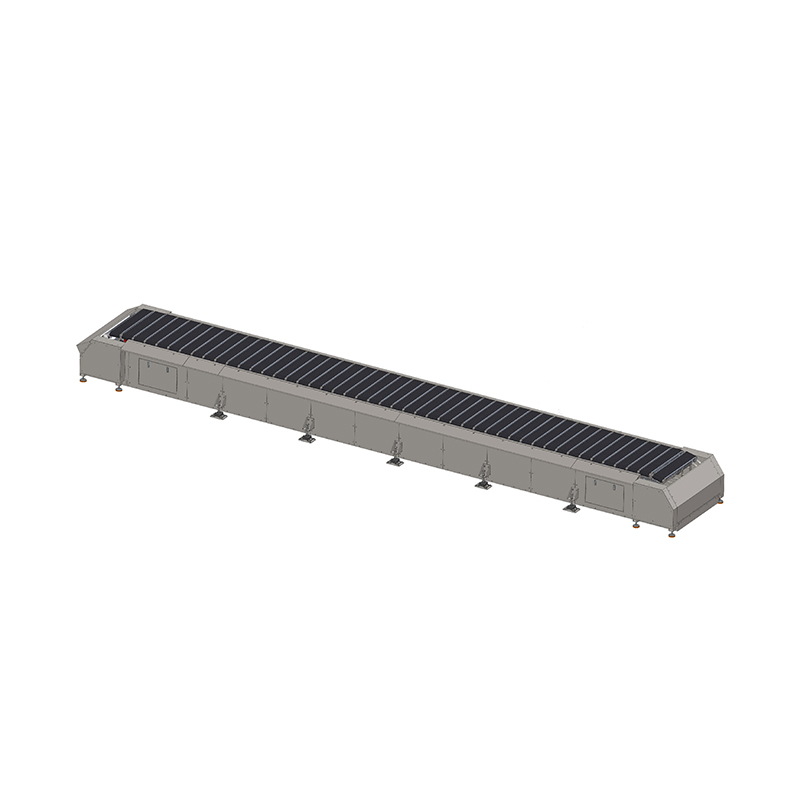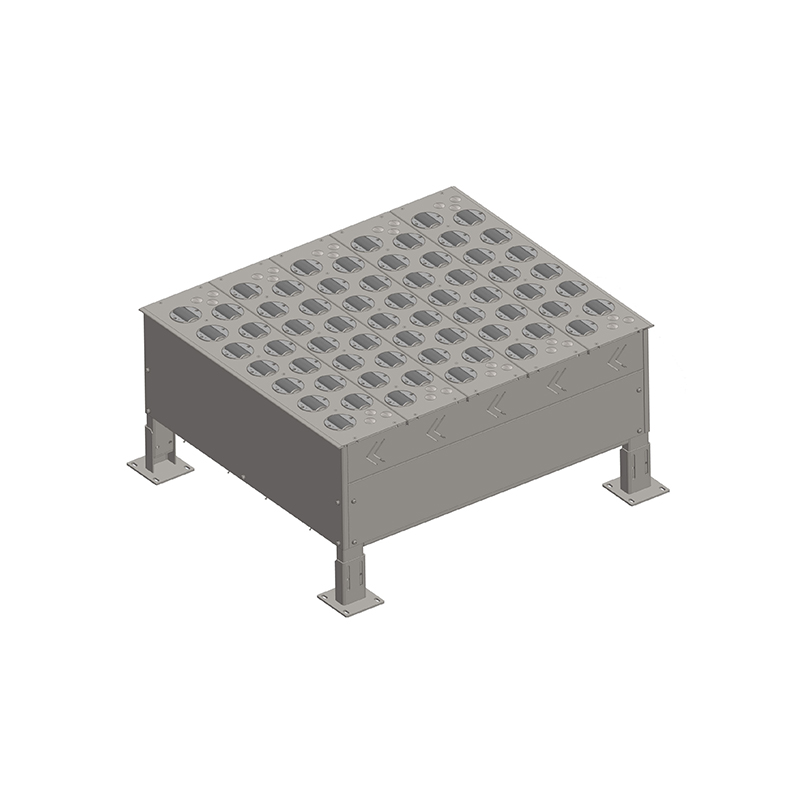Belt conveyor system becomes the secret weapon for logistics sorting center automation to "speed up and increase efficiency"
Release Time : 2025-06-30
At a time when e-commerce is booming and logistics demand is growing exponentially, logistics sorting centers are facing unprecedented challenges. Efficient, accurate and stable sorting operations have become the key to improving logistics competitiveness. The application of automated equipment systems has become an inevitable trend, and the belt conveyor system, as a core component, plays an irreplaceable role in logistics sorting centers with its high efficiency, flexibility and reliability.
1. The core role of the belt conveyor system in the logistics sorting center
Efficient cargo transmission
The belt conveyor system can achieve continuous and rapid transmission of goods. In the logistics sorting center, a large number of parcels need to flow quickly between different processing links, such as from the unloading area to the preliminary sorting area, and then to the fine sorting area. The belt conveyor can run at a stable speed and transport the parcels to the designated location quickly and orderly, greatly shortening the residence time of the goods in the sorting center and improving the overall sorting efficiency. For example, in large e-commerce logistics warehouses, the belt conveyor system can process thousands or even tens of thousands of parcels per hour to meet the logistics needs during peak periods.
Flexible layout to adapt to various scenarios
The layout of logistics sorting centers is often complex and needs to be designed according to different functional areas and sorting processes. The belt conveyor system is highly flexible and can be laid out in a variety of forms such as straight lines, turns, and inclinations according to the actual space and operation requirements of the sorting center. Whether it is a narrow passage or an irregular space, the smooth transportation of goods can be achieved by reasonably designing the belt conveyor line. At the same time, the conveyor line and sorting strategy can be quickly adjusted according to the changes in the sorting tasks to adapt to the sorting requirements of packages of different types and sizes.
Stable and reliable to ensure the continuity of operations
Logistics sorting operations require 24-hour uninterrupted operation, which requires extremely high stability of the equipment. The belt conveyor system uses high-quality materials and advanced manufacturing processes, and has high reliability and durability. Its structure is simple and easy to maintain, which can reduce the probability of equipment failure and ensure the continuity of sorting operations. Even if individual components are damaged, they can be quickly replaced and repaired without causing serious impact on the entire sorting process.
2. Key components and technical features of belt conveyor system
Conveyor belt
The conveyor belt is the core component of the belt conveyor system, which directly carries and transports goods. According to different cargo characteristics and conveying requirements, the conveyor belt can be made of different materials and structures. For example, for the sorting of ordinary parcels, rubber conveyor belts are commonly used, which have good wear resistance and tensile strength; for some goods that are easily damaged or require special protection, PVC conveyor belts or PU conveyor belts can be used, which have better flexibility and anti-slip properties. In addition, patterns or baffles can be added to the surface of the conveyor belt to improve the conveying stability of the goods and prevent the goods from slipping.
Drive device
The drive device provides power for the belt conveyor system and is usually composed of a motor, a reducer, and a coupling. The selection of the motor needs to be reasonably matched according to the load and operating speed of the conveying system to ensure that the conveyor belt can operate stably. The reducer can reduce the speed of the motor and increase the torque to meet the requirements of different conveying distances and loads. The coupling is used to connect the motor and the reducer to transmit power and compensate for installation errors. At the same time, modern belt conveyor systems are also equipped with variable frequency speed regulation technology, which can adjust the running speed of the conveyor belt according to actual needs, achieve energy saving and flexible control.
Support device
The support device is used to support the conveyor belt and goods to ensure the smooth operation of the conveyor belt. Common support devices include roller groups and brackets. The roller group is divided into load-bearing rollers and return rollers. The load-bearing rollers are used to support the goods on the conveyor belt, and the return rollers are used to support the unloaded conveyor belt. The quality and installation accuracy of the rollers directly affect the running smoothness and service life of the conveyor belt. The bracket is used to fix the roller group to ensure its accurate and stable position.
Tensioning device
The function of the tensioning device is to maintain a certain tension on the conveyor belt to prevent the conveyor belt from slipping and running off. Common tensioning devices include spiral tensioning devices, vertical weight tensioning devices, and hydraulic tensioning devices. The spiral tensioning device has a simple structure and is suitable for short-distance, low-tension conveying systems; the vertical weight tensioning device provides tension through the gravity of the weight, which is suitable for long-distance, high-tension conveying systems; the hydraulic tensioning device has the advantages of convenient tension adjustment and fast response speed, and is suitable for occasions with high tension requirements.
Control system
The control system is the brain of the belt conveyor system, which realizes the start, stop, speed adjustment, fault alarm and other functions of the conveyor system. Modern belt conveyor systems usually use PLC (programmable logic controller) as the control core, and use sensors to monitor the operating status of the conveyor belt in real time, such as speed, tension, deviation, etc., and automatically adjust and control according to the preset program. At the same time, the control system can also be linked with other automation equipment to realize the automated collaborative operation of the entire logistics sorting center.
3. Integrated application of belt conveyor system and other automation equipment
Integration with automatic sorting machine
The automatic sorting machine is one of the core equipment of the logistics sorting center, which can quickly sort according to the destination, weight, size and other information of the package. The belt conveyor system is closely integrated with the automatic sorting machine, accurately transporting the parcels from the conveyor belt to the entrance of the automatic sorting machine, and then the automatic sorting machine sorts them according to the preset rules. During the integration process, it is necessary to ensure that the speed and position of the conveyor belt match the operating rhythm of the automatic sorting machine to ensure the accuracy and efficiency of sorting.
Integration with the robot palletizing system
The robot palletizing system can palletize the sorted parcels according to certain rules for easy storage and transportation. The belt conveyor system transports the sorted parcels to the robot palletizing area, and the robot grabs the parcels and performs palletizing operations according to the preset program. Through the integration with the robot palletizing system, a fully automated process from sorting to palletizing is realized, which improves the efficiency and accuracy of logistics operations.
Integration with the warehouse management system
The warehouse management system (WMS) is responsible for the comprehensive management of the goods in the logistics sorting center, including the warehousing, storage, and outbound of the goods. The belt conveyor system interacts with the WMS for data and provides real-time feedback on the location and status information of the parcels. The WMS can optimize the sorting strategy and transportation route based on this information to improve the operational efficiency of the entire logistics sorting center. At the same time, the belt conveyor system can also accurately deliver the package to the designated storage area or outbound port according to the instructions of WMS.
Practical application case analysis
Taking a large e-commerce logistics sorting center as an example, the center introduced an advanced belt conveyor system, combined with automatic sorting machines, robot palletizing systems and other automation equipment, to achieve comprehensive automation of logistics sorting operations. In the design of the belt conveyor system, according to the layout and operation process of the sorting center, a multi-layer and multi-line conveying method is adopted to organically connect different functional areas. The conveyor belt is made of high-strength rubber material and has anti-slip patterns to ensure the stability of the goods during transportation.
Through integration with automatic sorting machines, the sorting center has achieved efficient sorting capabilities of processing tens of thousands of packages per hour. At the same time, the application of the robot palletizing system has increased the palletizing efficiency by more than 50%, reducing the cost and error of manual operation. Integration with the warehouse management system realizes real-time tracking and management of goods, and improves the accuracy and timeliness of inventory management. After actual operation verification, the sorting efficiency of the logistics sorting center has increased by more than 3 times, the operating cost has been reduced by 20%, and customer satisfaction has been significantly improved.
As the core component of the automation equipment system of the logistics sorting center, the belt conveyor system has many advantages such as high efficiency, flexibility and reliability. Through the integrated application with other automation equipment, it can realize the comprehensive automation of logistics sorting operations, improve sorting efficiency, reduce costs and enhance customer satisfaction. In the future, with the continuous development of the logistics industry and the continuous advancement of technology, the belt conveyor system will continue to innovate and improve, providing more powerful support for the efficient operation of the logistics sorting center. Logistics companies should fully realize the importance of the belt conveyor system, actively introduce and apply advanced belt conveyor technology, and enhance their own logistics competitiveness.








